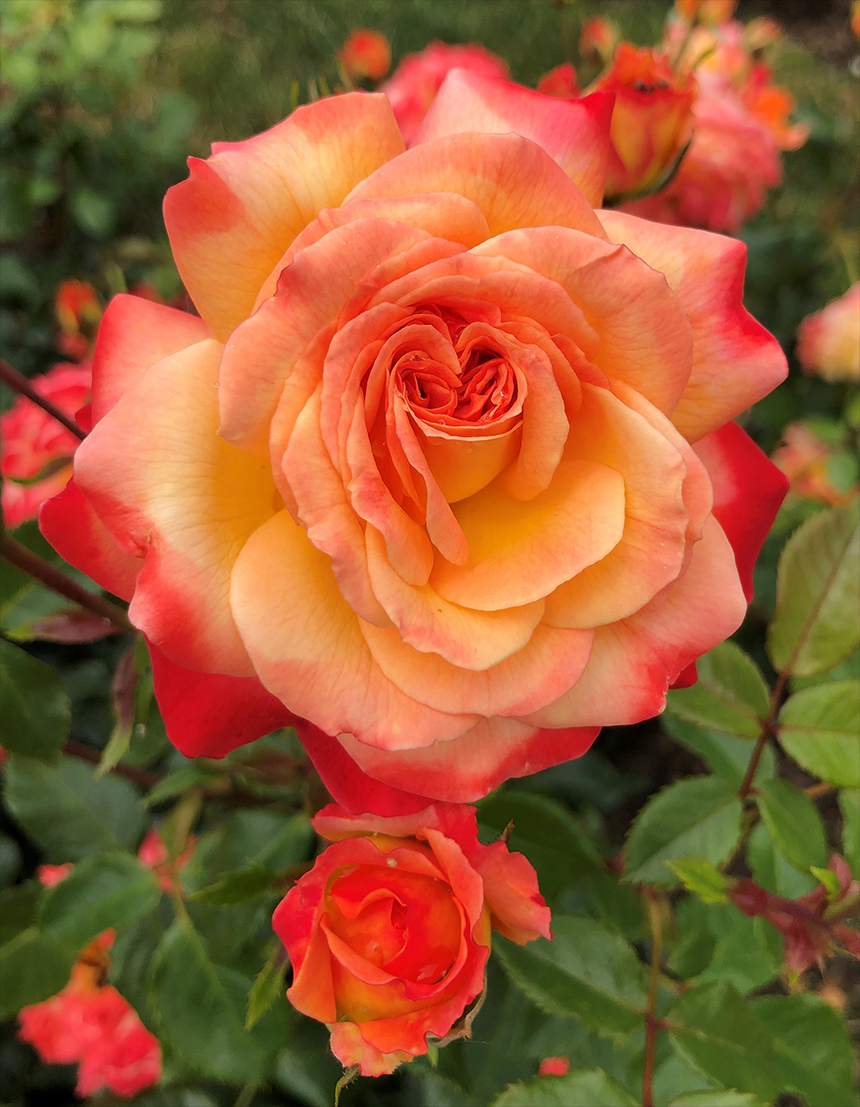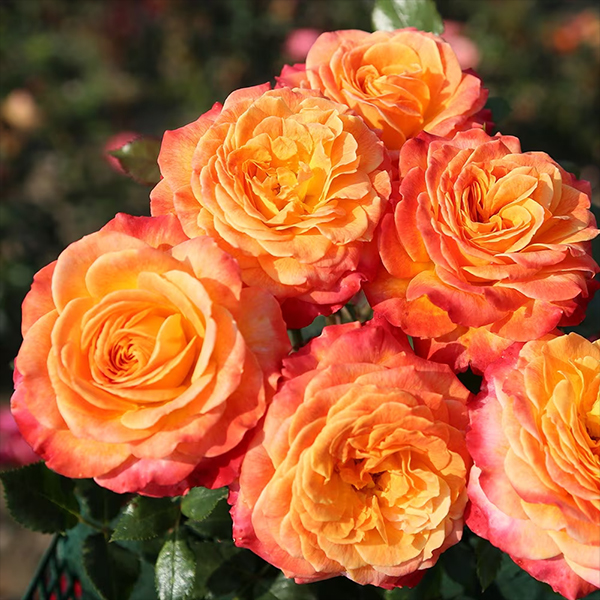Rose Meteor
syn. Rosa “Korzeigar”
DESCRIPTION
A fascinating floribunda producing plentiful, lightly-scented double blooms of vibrant brassy-yellow, flushed coppery-red which intensifies in high sunlight.
Rose of the Year for 2024, this repeat-flowering rosette wonder has excellent disease resistance, glossy dark green leaves, bushy growth and an erect, upright habit.
Suitable for both pots and borders.
A fascinating floribunda producing plentiful, lightly-scented double blooms of vibrant brassy-yellow, flushed coppery-red which intensifies in high sunlight. Rose of the Year for 2024, this repeat-flowering rosette wonder has excellent disease resistance, glossy dark green leaves, bushy growth and an erect, upright habit. Suitable for both pots and borders.
How to grow
If planting in winter, choose a frost-free spell when the soil is not frozen. Roses are quite deep-rooted plants so dig a deep hole roughly twice as wide as the plant’s roots and mix in a generous amount of composted organic matter. A top-dressing of a general purpose fertiliser can be worked into the surrounding soil and we also recommend using Rose Rootgrow at this stage to encourage better root development. This is particularly important when planting into a bed where roses have previously been grown as Rose Rootgrow is said to combat rose sickness (aka replant disease).
Potted roses
Remove the plants from their pots and gently spread out the roots before placing them in the centre of the hole. Try to ensure that the ‘bud union’ (the point where the cultivated rose has been grafted onto the rootstock, and from where the shoots emerge) is at soil level. You can judge this quite easily by laying something flat, like a spade handle or bamboo cane, across the top of the hole. When they are at the right height, back-fill the hole, firming the soil down gently before watering the plant well.
Bare Root Roses
Bare root roses are grown in an open field and then dug up when the weather conditions are right in from October until late winter. Suppliers send out their roses as ‘bare root’ plants (ie without pots or compost). As they are dormant throughout the winter, they will not produce any new roots until spring. They should be planted out as soon as possible but if this is not possible they should be “heeled in” until the conditions are right to do so.
They will already have been cut back so no further pruning will be required, apart from snipping off any tips that have died back. Routine pruning can begin in late winter the year after planting.
After care
Water generously until well established, and apply a specialist rose fertiliser (following the manufacturer’s instructions) each spring. They will also benefit from a generous mulch of composted farmyard manure in spring, but make sure this is kept away from the stems.
While wearing tough gloves, prune in late winter or early spring, removing any dead, damaged or weak-looking stems completely. The younger stems tend to produce the best flowers on hybrid teas, so if the plant is becoming congested, cut one or two of the older stems right back to their base, which will also help open up the centre of the plant. Then cut back the most vigorous stems to within 10-15cm from the base, leaving four to six buds on each stem. Finally, cut the thinner stems back to within 5-10cm from the base, leaving approximately two to four buds per stem.



